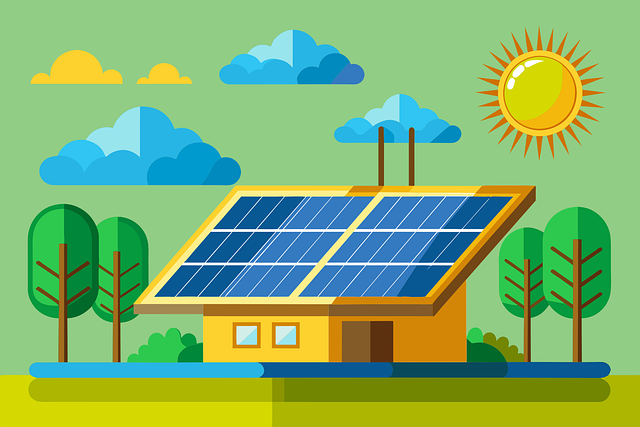As the world faces increasing environmental challenges, the role of technology in monitoring and improving air and water quality has never been more critical. Artificial Intelligence (AI) offers innovative solutions that empower both individuals and organizations to tackle these challenges efficiently.
This blog post explores various free AI tools that can significantly contribute to improving air and water quality, providing a detailed guide on how to integrate them into your environmental sustainability efforts.
AI-Powered Air Quality Monitoring Tools
OpenAQ Platform
OpenAQ is an open-source platform that aggregates air quality data from government agencies, research institutions, and NGOs worldwide. The platform uses AI to analyze vast amounts of data and provides insights into air pollution levels across different regions. With its user-friendly interface, OpenAQ allows users to access historical and real-time data, enabling better decision-making in addressing air quality issues.
Key Features:
-
- Global air quality data aggregation
- Real-time and historical data analysis
- Open-source and free to use
- API access for developers
b) AirVisual by IQAir
AirVisual is a widely-used tool that provides detailed air quality reports for various locations around the globe. Leveraging AI, it forecasts air pollution levels and suggests ways to minimize exposure. The platform is accessible via web and mobile apps, making it convenient for individuals and communities to stay informed about local air quality.
Key Features:
-
- Real-time air quality index (AQI) reporting
- AI-based air pollution forecasting
- Health recommendations based on AQI levels
- Free mobile app for iOS and Android
c) PurpleAir Sensors
PurpleAir offers low-cost sensors that collect air quality data, which is then processed using AI to provide accurate, hyper-local air pollution readings. The data from these sensors is shared on a global map, allowing communities to monitor their environment and take necessary actions to improve air quality.
Key Features:
-
- Affordable air quality sensors
- AI-enhanced data accuracy
- Community-driven data sharing
- Interactive global air quality map
AI Tools for Enhancing Water Quality
a) WaterScope
WaterScope is a free AI-powered tool designed to monitor and predict water quality in various water bodies. It integrates satellite imagery, ground sensors, and AI algorithms to detect anomalies such as pollution, algal blooms, and changes in water temperature. WaterScope’s predictive capabilities enable early intervention, helping to maintain the health of aquatic ecosystems.
Key Features:
-
- AI-based water quality monitoring and prediction
- Integration with satellite and sensor data
- Early detection of pollution and environmental changes
- User-friendly dashboard for easy data interpretation
b) AQUARIUS
AQUARIUS is an open-source AI tool developed for real-time water quality monitoring. It uses machine learning algorithms to analyze data from various sources, including IoT sensors and historical records, to provide insights into water quality trends. The tool is highly customizable, allowing users to tailor it to specific needs, such as monitoring drinking water or industrial discharge.
Key Features:
-
- Real-time water quality monitoring
- Machine learning-based data analysis
- Customizable for various water quality parameters
- Open-source and community-supported
c) WaterAdvisor
WaterAdvisor is an AI-driven platform that helps farmers and agricultural managers optimize water usage while maintaining water quality. It uses AI to analyze soil and weather data, providing recommendations on irrigation schedules that minimize runoff and contamination of nearby water bodies. This tool is particularly valuable in regions where water scarcity and pollution are significant concerns.
Key Features:
-
- AI-based irrigation recommendations
- Analysis of soil and weather data
- Prevention of water contamination from agricultural runoff
- Free access for small-scale farmers
AI for Pollution Source Identification
a) Pollution Map by Google AI
Google AI has developed a pollution mapping tool that uses machine learning to identify pollution sources, such as industrial facilities, traffic, and construction sites. This tool leverages satellite data and street-level imagery to create detailed pollution maps, which can be used by policymakers and environmental activists to target pollution reduction efforts effectively.
Key Features:
-
- AI-based identification of pollution sources
- Integration with satellite and street-level imagery
- Detailed pollution mapping for urban areas
- Free access to data and insights
b) Earthranger
Earthranger is an AI tool developed by Vulcan Inc. to monitor and manage environmental threats, including pollution. While originally designed for wildlife conservation, Earthranger’s capabilities have expanded to include air and water pollution tracking. It provides real-time data and analytics, helping organizations quickly identify and respond to environmental hazards.
Key Features:
-
- Real-time environmental threat monitoring
- AI-powered analytics and alerts
- Versatile tool for both wildlife and pollution management
- Free for conservation and environmental NGOs
Community-Driven AI Tools for Environmental Action
a) EcoPing
EcoPing is a community-based platform that allows users to report and monitor environmental pollution incidents, including air and water quality issues. The platform uses AI to validate reports and map pollution hotspots. EcoPing encourages community involvement in environmental protection, making it easier for local authorities to address pollution concerns.
Key Features:
-
- Community reporting of pollution incidents
- AI-based validation and analysis of reports
- Mapping of pollution hotspots
- Free platform for individuals and communities
b) AI4Water
AI4Water is an open-source project that provides a suite of AI tools for improving water management at the community level. It offers models for predicting water quality, optimizing water treatment processes, and managing water distribution systems. The platform is designed to be accessible to non-experts, promoting grassroots initiatives for water conservation and quality improvement.
Key Features:
-
- AI models for water quality prediction and management
- User-friendly interface for community use
- Support for water conservation initiatives
- Open-source and free to access
Integrating AI Tools into Your Environmental Strategy
Integrating AI tools into your environmental strategy can significantly enhance your efforts to improve air and water quality. Here are a few tips on how to get started:
- Assess Your Needs: Identify the specific air or water quality issues you need to address, and choose AI tools that align with your goals.
- Leverage Community Platforms: Engage with community-driven tools like EcoPing and AI4Water to mobilize local action and share data.
- Stay Informed: Use real-time monitoring tools like AirVisual and WaterScope to stay updated on environmental conditions in your area.
- Collaborate with Experts: Partner with environmental organizations and tech experts to maximize the impact of AI tools in your sustainability efforts.
Conclusion
The rise of AI has opened new avenues for improving air and water quality, offering powerful tools that are both accessible and effective. By integrating these free AI tools into your environmental initiatives, you can contribute to a healthier planet and a more sustainable future. Whether you’re an individual, a community leader, or an organization, these tools provide the means to make a meaningful impact on the environment.






